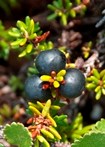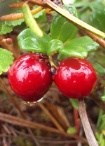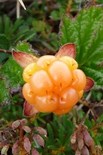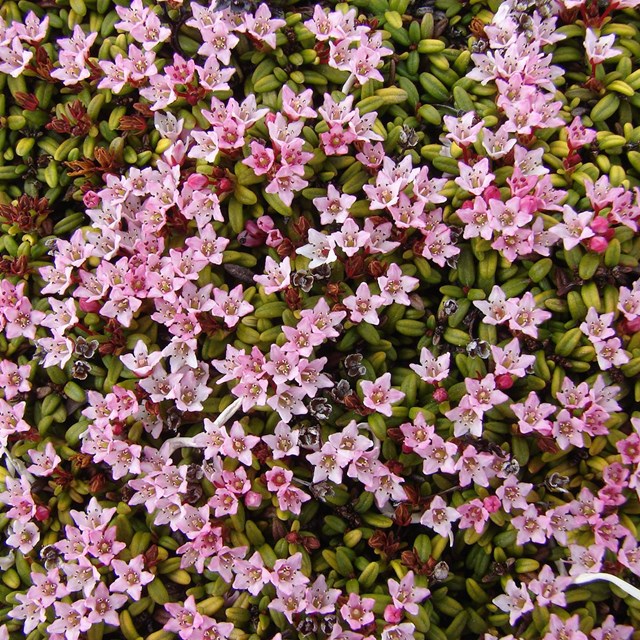|
With nearly 50 species of wild berries in Alaska, the fall season is a time of great abundance in the Seward Peninsula. From around July until the first frost, locals and subsistence gatherers scatter throughout the slope tundra to collect gallons of these low-growing ripe fruit. Visitors should be aware that while most berries on the Seward Peninsula are edible, there are some poisonous species in Alaska. Make sure you know the identity of a plant before you eat it! If you're careful, hiking in Bering Land Bridge in the fall can be a deliciously rewarding experience. 
NPS Photo / Matt Jenkins Suġaq / Bog Blueberry(Vaccinium uliginosum) One of many blueberry varieties on the Seward Peninsula, the Bog Blueberry blooms from late-May through June. The tart fruit can be harvested from about July through August. It grows best in bogs, tundra, and alpine slope habitats. 
NPS Photo / Andrea Willingham Crowberry(Empetrum nigrum) The crowberry is one of the most abundant berries found on the tundra, blooming from May through June in heaths, bogs, and alpine slopes. They grow in a thick shrub with small, needle-like leaves. The berries ripen around July–August, and are firm, juicy, and edible, but seedy. 
NPS Photo / Matt Jenkins Kipmiknat / Low-bush Cranberries(Vaccinium vitis idaea) Also known as the Lingonberry, this tiny evergreen shrub blooms with tiny pink bell-shaped flowers in June and July. Its tart, bitter berries ripen around August–September, with best flavor after a frost. It is most common in hummocks in bogs, as well as low alpine slopes. 
NPS Photo Aqpik / Salmonberry(Rubus chamemorous) Also known as a cloudberry, this juicy orange raspberry-shaped fruit grows in greatest abundance in wet areas, ripening from mid-July to August. When ripe, it has a tart flavor and can be eaten raw or used in jams and jellies. More Plants at Bering Land Bridge
|
Last updated: December 10, 2025






